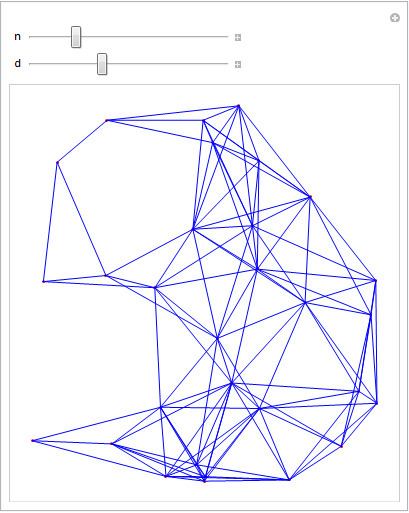 | ||
The evolution of the random geometric graph
In graph theory, a random geometric graph (RGG) is the mathematically simplest spatial network, namely an undirected graph constructed by randomly placing N nodes in some metric space (according to a specified probability distribution) and connecting two nodes by a link if and only if their distance is in a given range, e.g. smaller than a certain neighborhood radius, r.
Contents
A real-world application of RGGs is the modeling of ad hoc networks.
Examples
The simplest choice for the node distribution is to sprinkle them uniformly and independently in the embedding space.
References
Random geometric graph Wikipedia(Text) CC BY-SA
